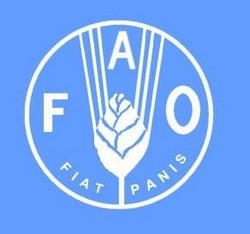
Vital Signs Of FAO 2014 State of the world
Mohamed shihab
-FAO recognizes the important contribution that small-scale fisheries make to global poverty alleviation and food security.
-In 2012, aquaculture now provides almost half of all fish for human food.
-Aquaculture projected to rise to 62 % by 2030, as catches from wild capture fisheries level off.
-World per capita apparent fish consumption increased from an average of 9.9 kg in the 1960s to 19.2 kg in 2012.
-China has been responsible for most of the growth in fish availability, owing to the dramatic expansion in its fish production, particularly from aquaculture.
-since 2011, china become the world’s third-largest importing country, after the USA and Japan
-EU is the largest market for imported fish and fishery products, and its dependence on imports is growing.
-About 18.9 million were engaged in fish farming (more than 96 % in Asia).
-FAO is promoting “Blue Growth” as a coherent approach for the sustainable, integrated and socio-economically sensitive management of oceans and wetlands, focusing on capture fisheries,aquaculture, ecosystem services, trade and social protection of coastal communities.
-Of the 66.6 million tonnes of farmed food fish produced in 2012, two-thirds (44.2 million tonnes) were finfish species grown from inland aquaculture (38.6 million tonnes) and mariculture (5.6 million tonnes).
-In 2012, farmed crustaceans accounted for 9.7 percent (6.4 million tonnes) of food fish aquaculture production by volume but 22.4 percent (US$30.9 billion) by value. FAO state of the world 2014
-At 2012, the number of species registered in FAO statistics was 567, including finfishes (354 species, with 5 hybrids), molluscs (102), crustaceans (59), amphibians and reptiles (6), aquatic invertebrates (9), and marine and freshwater algae (37).
-Eels (Anguilla spp.), farming still relies entirely on wild seed.
-In 2012, global production of non-fed species from aquaculture was 20.5 million tonnes, including 7.1 million tonnes of filter-feeding carps and 13.4 million tones of bivalves and other species.
-Non-fed species in total farmed food fish production declined further from 33.5 percent in 2010
to 30.8 percent in 2012. FAO state of the world 2014
- The farming of tilapias, including Nile tilapia and some other cichlids species, is the most widespread type of aquaculture in the world. FAO has recorded farmed tilapia production statistics for 135 countries and territories on all continents. The true number of producer countries is higher because commercially farmed tilapias are yet to be reflected separately in national statistics in Canada and some European countries.
-58.3 million people were engaged in the primary sector of capture fisheries and aquaculture in 2012. Of these, 37 % were engaged full time.
-Although the microalgae of Spirulina spp. have a high protein content (more than 60 percent in dry weight), its production volume is still marginal compared with other farmed species.
-According to the available data, in 2012, 33 countries and territories worldwide harvested 23.8 million tonnes (wet weight) of aquatic plants from aquaculture, while capture production was 1.1 million tonnes.
-World production of farmed seaweeds more than doubled from 2000 to 2012. Expansion has been particularly impressive in Indonesia.
-Beyond Asia, Tanzania in East Africa and Solomon Islands in the Pacific have experienced strong growth in seaweed farming (mostly Kappaphycus alvarezii) for export markets.
لمزيد من المعلومات يمكن التواصل مع الروابط التالية المتعلقة بالمزارع السمكية:
http://www.facebook.com/groups/210540498958655/
http://kenanaonline.com/hatmheet
http://kenanaonline.com/users/hatmheet/posts
https://twitter.com/shihab2000eg
http://www.youtube.com/results?search_query=shihabzoo&sm=3


ساحة النقاش